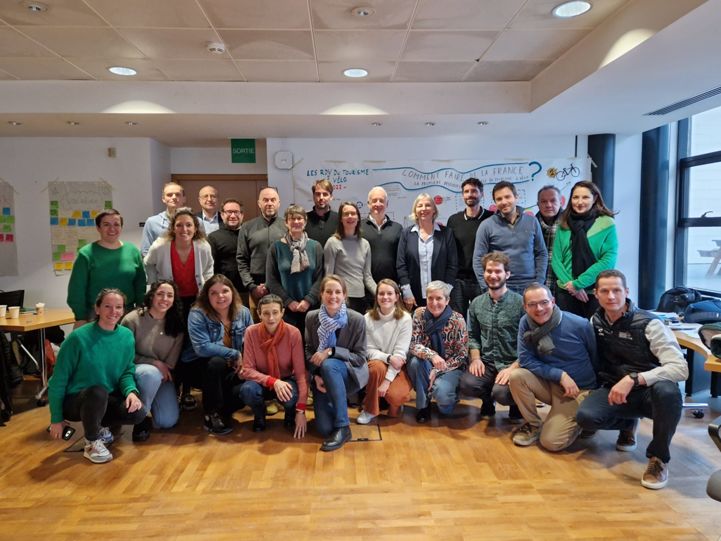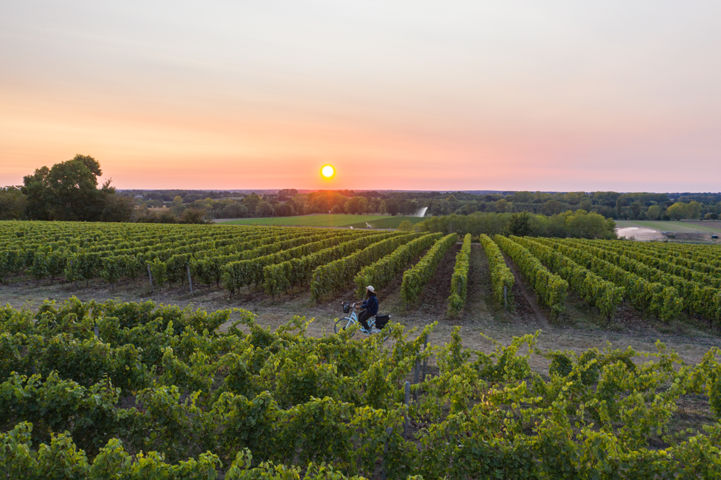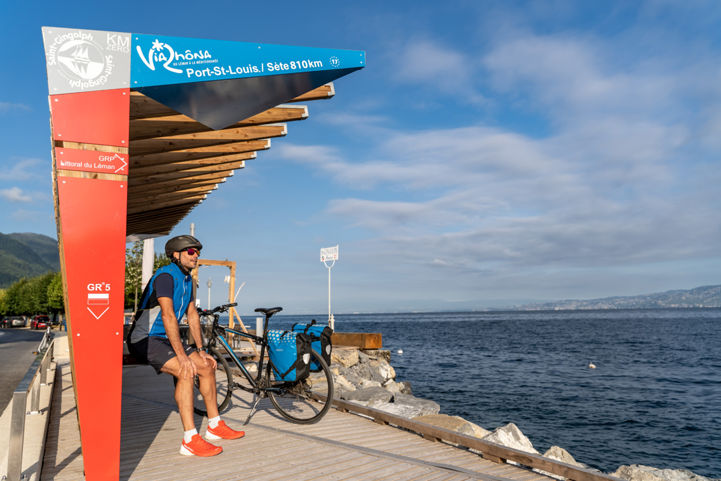French Strategy on Cycling Tourism: Vélo & Territoires leads a co-designed approach to serve ambitious goals
Vélo & Territoires, French National EuroVelo Coordination Centre, is coordinating a working group to design the first-ever Strategy on Cycling Tourism, with the aim of achieving an ambition stated by the Government itself: becoming the world’s leading cycling tourism destination. The project is supported by ADEME, the French Agency for Ecological Transition. Learn more about this unique initiative in the interview with Karine Lassus, Development Officer at Vélo & Territoires.
ECF: Vélo & Territoires organised a meeting on the French Strategy on Cycling Tourism on 1 February. What was the aim of it?
V&T: This meeting followed a process initiated last June at the National Conference on Cycling Tourism 2022. On that day, we identified the obstacles and assets of France in terms of cycling tourism, and there are many! It was important to continue this work and to develop a national roadmap for cycling tourism with a variety of public and private stakeholders.

ECF: Where does France's ambition to become the world's leading destination for cycling tourism come from?
V&T: Tourism represents a major industry and economic windfall, reaching 7.4% of GDP in France before the pandemic. It is often said that France is the second cycling tourism destination behind Germany... Our aim is not to remain the eternal second and to provide the necessary means to take the lead and offer our customers the best possible welcome! This ambition was reflected in the renewed strategic statement of Vélo & Territoires from 2016. Then, in November 2021, it was taken up again in the “Destination France” National Recovery Plan, reaffirmed in September 2022 by the Prime Minister in the new Cycling Strategy and by the cycling industrial players. The context is more than positive, and events such as the Paris Olympics of 2024 could give it a boost.
ECF: What are the main actions planned to achieve this ambition and what is the timeframe?
V&T: The meeting on 1 February enabled us to set the first milestones and to agree on a common ambition, strategic challenges and objectives to be achieved. It was necessary to define a shared vision and to take into account all forms of cycling tourism, whether it is on a cycle route or at a destination, and to integrate all practices – bikepacking, cycling tourism for families, all-included trips, mountain or gravel biking, or even road cycling on the most beautiful passes of the Tour de France.

ECF: Cycling tourism is not monitored on a European or global scale today. How will it be possible for French partners to know if their objective is being achieved?
V&T: Monitoring is indeed necessary to see the progress of cycling tourism in France and to identify what remains to be implemented. We need to structure the data and monitor the evolution of customers and the economic benefits of the sector on a long-term basis in order to be able to influence decision-making. Countries such as Germany, with its Bicycle Travel Analysis, are conducting inspiring analyses which we will certainly look into. Having a European-wide observatory for cycling tourism would be a wonderful tool! Although we do not yet have the miracle recipe for financing such an observatory, we are seriously working on it with our tool, Plateforme Nationale des Fréquentations. This is one of the aspects we are working on in the framework of the French strategy. The same goes for the European level, updating the 2012 study "The European cycle route network EuroVelo" would be really useful for European recognition, ambition and comparison. A great project for ECF and its partners!
ECF: What about EuroVelo and the European dimension of cycling tourism in the French strategy?
V&T: With 10 routes and almost 9,000 km, EuroVelo is an important part of our National Cycle Route Network. EuroVelo routes are the most advanced in our country and fully integrated into the national cycling tourism strategy. EuroVelo routes have an incredible influence on a European and international scale, which makes them leaders in long-distance cycling. They also offer another approach to cycling tourism in Europe and enable innovation through European projects such as AtlanticOnBike, MedCycleTour, EuroVelo 6, etc. France shares its border with several countries which represent potential project opportunities around EuroVelo or other cycling topics. The recent resolution adopted in the European Parliament clearly illustrates this European dimension of cycling tourism and EuroVelo.

ECF: What are the next steps and perhaps the obstacles that still need to be overpass?
V&T: We have already scheduled new workshops to translate the strategic objectives into concrete operational measures. In particular, we have major obstacles to overcome on the issues of intermodality and knowledge exchange within the ecosystem itself. The work is colossal, but cycling tourism professionals are not short of ideas – quite the opposite! We will meet on 7 and 8 June at the National Conference on Cycling Tourism in Angoulême to unveil the roadmap and continue to write the history of cycling tourism in France.
Interview by Agathe Daudibon with Karine Lassus from Vélo & Territoires
Cover picture: EuroVelo 4 - Central Europe Route, La Vélomaritime, Le Crotoy en Baie de Somme © Emmanuel Berthier